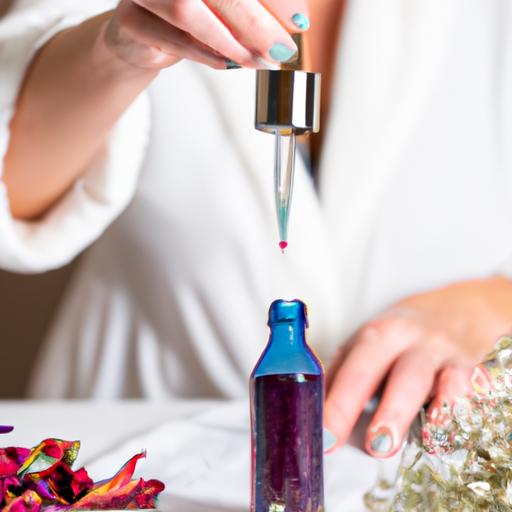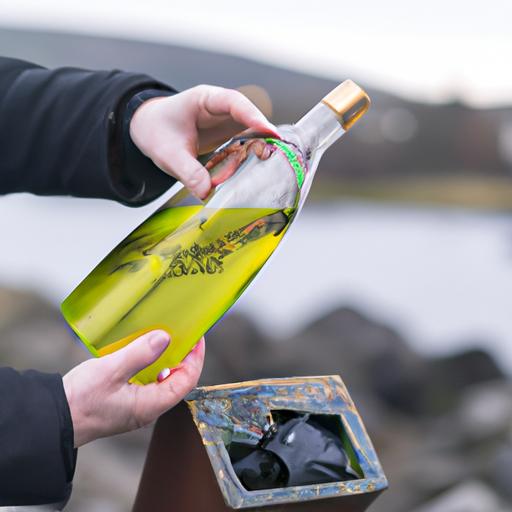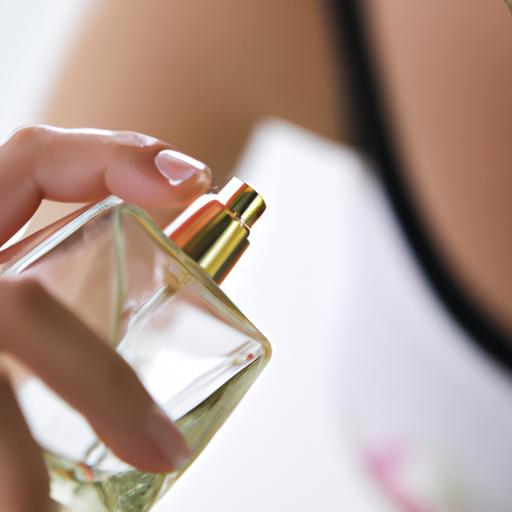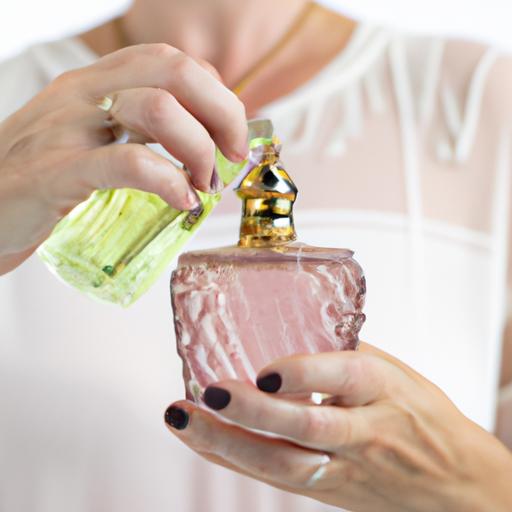How to Make Oil for Perfume: Create Unique Scents at Home

Introduction
Are you tired of the same commercial perfumes that everyone else is wearing? Do you long for a signature scent that truly reflects your personality? Look no further! In this article, I will guide you through the art of making your own oil for perfume. By creating homemade perfume oils, you can unlock a world of unique scents that captivate and enchant. So, let’s dive into the enticing realm of fragrance-making!
A. Importance of creating homemade oil for perfume
Why should you embark on the journey of making your own oil for perfume? Well, the answer is simple: individuality. When you craft your own perfume, you have the power to express your distinctive style and essence. You no longer need to settle for mass-produced scents that lack personality. Instead, you can create a fragrance that is exclusively yours, leaving a lasting impression wherever you go.
B. Benefits of making oil for perfume at home
Not only does creating perfume oil at home allow you to be unique, but it also offers numerous other benefits. Firstly, it gives you control over the quality of ingredients used, ensuring that you only use natural and safe components. Additionally, homemade perfume oils are often more affordable in the long run, as you can reuse and repurpose existing oils and materials. Lastly, this creative process can be incredibly rewarding, providing a therapeutic and enjoyable experience.
C. Brief overview of the process
Before we delve into the specifics of making oil for perfume, let’s briefly understand the process. Perfume oils are created by blending essential oils with carrier oils and other fragrance-enhancing ingredients. These oils can be extracted from various plants and flowers, each possessing its own distinct aroma. By experimenting with different combinations and proportions, you can customize your perfume to suit your preferences. The result? A one-of-a-kind fragrance that exudes your unique charm.
Stay tuned for the following sections, where we will explore the world of perfume oils in greater detail. Get ready to unleash your creativity and embark on a fragrant adventure that is sure to leave an indelible mark!
Up next: Understanding the Basics of Perfume Oils
Understanding the Basics of Perfume Oils
A. What are perfume oils?
Perfume oils, also known as fragrance oils or essential oils, are concentrated aromatic compounds that capture the essence of various scents. These oils are extracted from natural sources such as flowers, fruits, spices, and woods, and they serve as the foundation for creating captivating perfumes. Unlike alcohol-based perfumes, perfume oils have a longer-lasting scent and are often favored by those with sensitive skin.
B. Different types of perfume oils available
When it comes to perfume oils, the options are vast and diverse. Here are a few common types you can explore:
-
Floral Oils: Derived from flowers such as rose, jasmine, and lavender, floral oils offer a romantic and delicate fragrance profile.
-
Citrus Oils: Extracted from fruits like lemon, orange, and grapefruit, citrus oils provide a refreshing and invigorating scent.
-
Woody Oils: Obtained from trees and woods like sandalwood and cedarwood, woody oils offer a warm and earthy aroma.
-
Spicy Oils: Derived from spices such as cinnamon, clove, and cardamom, spicy oils provide a rich and exotic fragrance.
C. Pros and cons of using perfume oils
Using perfume oils has its advantages and considerations worth noting:
Pros:
- Long-lasting scent: Perfume oils tend to linger on the skin for a longer duration, ensuring you smell delightful throughout the day.
- Customizability: With perfume oils, you have the freedom to create unique blends and tailor the intensity of the fragrance to your liking.
- Skin-friendly: Perfume oils are often gentler on the skin compared to alcohol-based perfumes, making them suitable for individuals with sensitivities.
Cons:
- Evaporation: Unlike alcohol-based perfumes, perfume oils do not evaporate quickly, which means they may stain clothing or fabrics if not used carefully.
- Limited availability: While there is a wide range of perfume oils available, some rare or exotic scents may be harder to find.
Understanding the basics of perfume oils sets the stage for the exciting journey ahead. In the upcoming sections, we will explore the selection of ingredients and step-by-step process to create your very own perfume oil. Get ready to embark on a fragrant adventure!
Up next: Selecting the Right Ingredients for Perfume Oil
Selecting the Right Ingredients for Perfume Oil
A. Essential oils suitable for perfume making
When it comes to making oil for perfume, essential oils are the heart and soul of your creation. These highly concentrated plant extracts provide the distinct fragrance notes that make your perfume unique. With a wide range of essential oils available, it’s important to select ones that blend harmoniously to create a balanced and captivating scent.
Consider using popular essential oils such as lavender, rose, jasmine, or sandalwood for their timeless appeal. For a fresh and uplifting aroma, citrus oils like bergamot, lemon, or orange can be excellent choices. Remember to experiment with different combinations to find the perfect blend that resonates with your personal style.
B. Carrier oils and their role in perfume oil formulation
While essential oils provide the fragrance, carrier oils play a crucial role in diluting and carrying the scent. These base oils act as a medium to disperse the essential oils, ensuring the perfume is safe to apply on the skin. When selecting carrier oils, opt for ones that have a neutral scent and a long shelf life.
Common carrier oils include jojoba oil, sweet almond oil, and grapeseed oil, among others. These oils not only help to extend the fragrance’s longevity but also provide moisturizing benefits to the skin. Experiment with different carrier oils to find one that suits your skin type and enhances the overall perfume experience.
C. Additional ingredients to enhance the fragrance
To create a truly captivating perfume, consider incorporating additional ingredients that enhance and elevate the fragrance. These ingredients can add depth, complexity, and longevity to your perfume oil. Some popular options include:
-
Fixatives: These ingredients help anchor the fragrance, ensuring it lasts longer. Common fixatives include benzoin resin, frankincense, and myrrh.
-
Middle and base notes: To create a well-rounded perfume, include middle and base notes that provide depth and richness. Examples of middle notes are geranium, ylang-ylang, and nutmeg, while base notes include patchouli, vanilla, and cedarwood.
Remember, the key to a successful perfume blend is finding the right balance between essential oils, carrier oils, and additional ingredients. Don’t be afraid to experiment and trust your nose to guide you towards creating your own signature scent.
Up next: Step-by-Step Guide for Making Perfume Oil
Step-by-Step Guide for Making Perfume Oil
A. Preparing the necessary tools and materials
Before diving into the enchanting world of perfume-making, it’s crucial to gather all the necessary tools and materials. Here’s a checklist to ensure you’re well-equipped for your aromatic adventure:
-
Essential Oils: Select your desired essential oils based on the scent profile you wish to create. Popular choices include lavender, rose, jasmine, and citrus oils.
-
Carrier Oils: Choose a carrier oil that will blend well with your essential oils. Common carrier oils include jojoba oil, almond oil, and coconut oil.
-
Mixing Container: Find a dark glass bottle or jar to store your perfume oil. Dark glass helps protect the oils from UV light, preserving their fragrance.
-
Dropper or Pipette: A dropper or pipette will help you accurately measure and blend the oils.
-
Labels: Don’t forget to label your perfume oil bottle with the name of your custom fragrance, ingredients used, and the date of creation.
Once you have gathered these essential tools and materials, you are ready to embark on your perfume-making journey.
B. Blending the essential and carrier oils in the right proportions
Now that you have everything you need, it’s time to blend the essential and carrier oils to create your perfume base. Follow these steps for a well-balanced and harmonious fragrance:
-
Start by determining the ratio of essential oils to carrier oils. A common guideline is to use about 20-30% essential oils and 70-80% carrier oils. However, you can adjust this according to your personal preference.
-
Using your dropper or pipette, carefully measure the required amount of essential oil and transfer it into the mixing container.
-
Next, add the appropriate amount of carrier oil to the container, ensuring the oils are well-mixed.
-
Gently swirl the container to combine the oils, allowing the scents to meld together.
Remember, the blending process is where you can get creative and experiment with different combinations of essential oils to achieve your desired fragrance.
C. Incorporating additional ingredients for desired scent profile
To add depth and complexity to your perfume oil, consider incorporating additional ingredients such as:
-
Fixatives: These substances help the fragrance last longer on the skin. Some popular fixatives include vanilla extract, benzoin resin, and tonka bean.
-
Middle Notes: Enhance the heart of your fragrance by adding middle notes, which provide a bridge between the top and base notes. Examples of middle notes include geranium, ylang-ylang, and clary sage.
-
Top Notes: These are the initial scents that greet your senses when applying the perfume. Common top notes include citrus oils like bergamot, lemon, and grapefruit.
Experiment with different combinations of these ingredients, adjusting the quantities to achieve your desired scent profile.
D. Mixing and storing the perfume oil properly
Once you have blended your oils and additional ingredients, it’s time to mix and store your perfume oil properly. Follow these final steps to ensure your fragrance remains intact:
-
Seal the mixing container with its lid securely and gently shake the bottle to thoroughly blend the ingredients.
-
Allow the perfume oil to settle for at least 24 hours, allowing the scents to meld and mature.
-
After the resting period, give your perfume oil a final sniff test to ensure it meets your expectations. If desired, you can make further adjustments by adding more essential oils or carrier oils.
-
Store your perfume oil in a cool, dark place to preserve its fragrance. Avoid exposure to direct sunlight or extreme temperatures.
Congratulations! You have successfully created your own perfume oil. Enjoy the satisfaction of wearing a fragrance that is uniquely yours.
Up next: Tips and Tricks for Customizing Perfume Oil
Tips and Tricks for Customizing Perfume Oil
A. Experimenting with different essential oil combinations
Now that you have the basics down, it’s time to unleash your creativity and experiment with different essential oil combinations. Essential oils are the heart and soul of your perfume, providing the unique scents that make it truly special. Start by selecting a few essential oils that resonate with your preferences. For example, if you prefer floral scents, you can try a combination of rose, jasmine, and lavender oils. For a more exotic touch, consider blending sandalwood, patchouli, and ylang-ylang. The possibilities are endless!
B. Adjusting the intensity and longevity of the fragrance
One of the advantages of making your own oil for perfume is the ability to customize the intensity and longevity of the fragrance. If you prefer a subtle scent that lingers close to the skin, use fewer drops of essential oil in your blend. On the other hand, if you want a more potent and long-lasting fragrance, you can increase the concentration of essential oils. Remember, though, that some essential oils have stronger scents than others, so it’s essential to find the right balance that suits your preferences.
C. Adding personal touches to create unique scents
To truly make your perfume oil unique, consider adding personal touches to the blend. You can incorporate a few drops of your favorite carrier oil, such as jojoba or almond oil, to give your perfume a silky and moisturizing feel. Additionally, you can infuse your perfume with a touch of elegance by adding a few drops of vanilla or a hint of citrus with bergamot oil. These personal touches will not only enhance the fragrance but also make it a true reflection of your individuality.
With these tips and tricks, you are well on your way to creating a customized perfume oil that is tailored to your preferences. Embrace your inner perfumer and let your imagination run wild as you embark on this aromatic journey!
Up next: Final Thoughts and Safety Precautions
Conclusion
In conclusion, learning how to make oil for perfume opens up a world of possibilities to create your own unique scents. By following the step-by-step guide and experimenting with different essential oils, carrier oils, and additional ingredients, you can craft a fragrance that is truly your own. The process of making homemade perfume oils not only allows you to express your individuality but also offers numerous benefits such as cost-effectiveness, quality control, and a rewarding creative experience.
Now, it’s time to unleash your creativity and embark on this fragrant journey. Whether you want a floral and delicate aroma or a bold and captivating scent, the power is in your hands. Remember to follow the safety guidelines and enjoy the process of experimenting with different combinations to find the perfect fragrance that resonates with you.
As you explore the art of making oil for perfume, don’t forget to visit cosmetic.cungcapngoi.com for more tips, tricks, and inspiration. Our brand is dedicated to providing valuable resources and guidance to help you create the perfect fragrance that reflects your unique style. So, let your imagination run wild, and let your signature scent become your personal statement.
Now, go forth and create your own captivating perfume oil that will leave a lasting impression wherever you go!
Thank you for joining us on this fragrant adventure!
Stay tuned for more exciting articles and tutorials on creating your own beauty products.
Up next: Understanding the Basics of Perfume Oils
Conclusion: So above is the How to Make Oil for Perfume: Create Unique Scents at Home article. Hopefully with this article you can help you in life, always follow and read our good articles on the website: cosmetic.cungcapngoi.com




